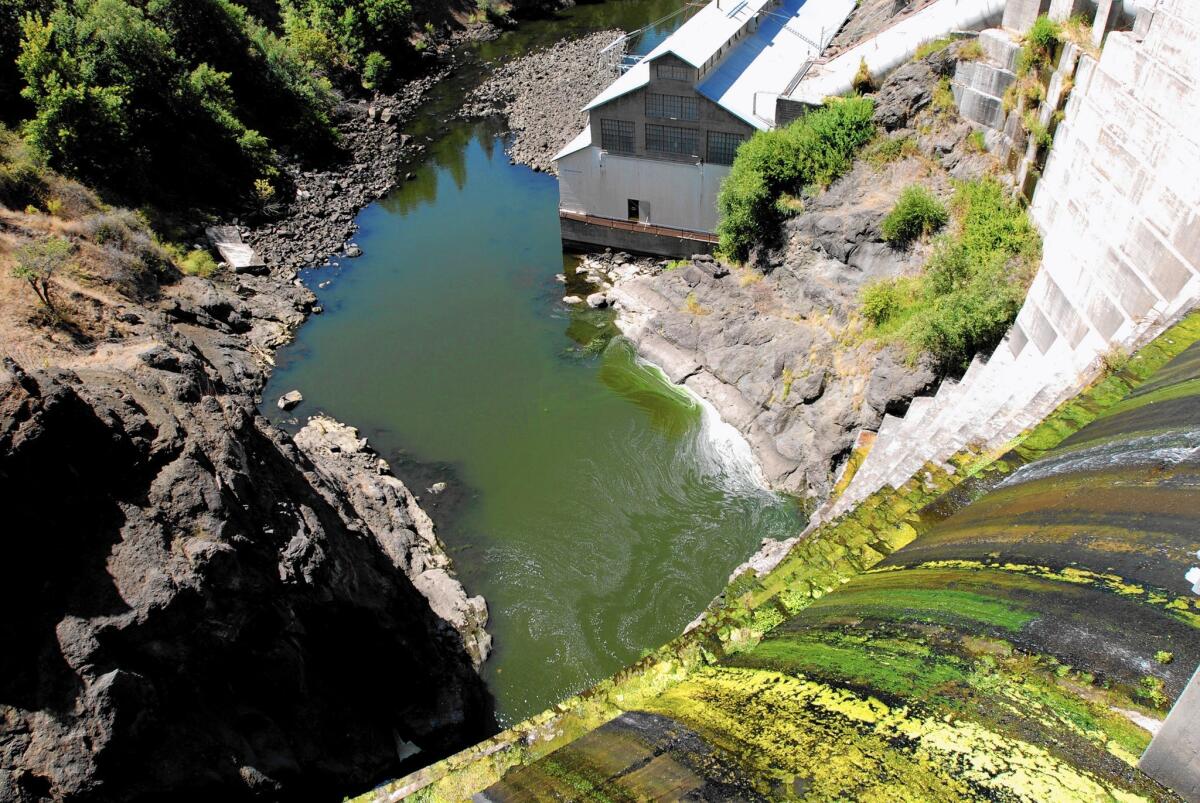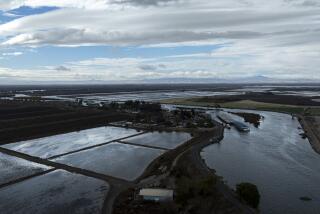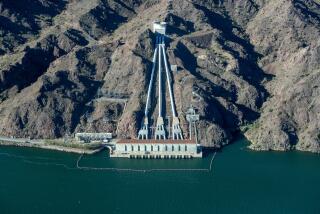Pact reached to remove four Klamath River dams that block salmon migration

The Copco 1 dam near Hornbrook, Calif., is one of four on the Klamath River set to be removed under an agreement among California, Oregon and other officials.
California, Oregon and a private utility Wednesday signed an agreement that could finally take down four hydroelectric dams that block salmon migrations on the Klamath River.
The pact, signed by the governors of both states and federal officials at the mouth of the Klamath in Northern California, spells out a road map for pursuing the dams’ demolition without congressional approval.
It amends part of a complicated 2010 pact that gave the U.S. Interior Department a major role in the decommissioning and required Congress to sign off on the removal. Congress failed to act on authorizing legislation by last year’s deadline, throwing the deal into limbo.
The new version eliminates direct federal involvement, sidestepping the need for congressional authorization.
“This historic agreement will enable Oregon and California and the interested parties to get these four dams finally removed and the Klamath River restored to its pristine beauty,” Gov. Jerry Brown said.
Under the amendment, PacifiCorp, the private utility that owns the dams, will transfer title and license to a recently created nonprofit that will seek permission from the Federal Energy Regulatory Commission to remove the dams by 2020.
Funding outlined in the original agreement remains in place. California will contribute up to $250 million in state bond money, and a surcharge on PacifiCorp customers in Oregon and Northern California will provide up to $200 million. That would cover the estimated decommissioning costs of $300 million.
The new organization, called the Klamath River Renewal Corp., will manage the decommissioning process and also assume liability for any problems associated with the removal.
Originally backed by many tribal, farming and fishery interests in the Klamath Basin, the agreements ran into opposition on a variety of fronts. Some conservationists complained that the pact gave too much water to irrigators and not enough to fish. California’s Siskiyou County, where three of the dams are located, fought the loss of property taxes and a power source.
Rep. Doug LaMalfa, a farmer and Richvale Republican who represents much of Northern California, complained Wednesday that state and federal officials had made an end-run around Congress.
“The overwhelming majority of residents of the Klamath Basin, those who are actually impacted, have been cut out of this process in favor of environmental extremists, bureaucrats in Sacramento and Washington, and a taxpayer bailout for billionaire Warren Buffett,” LaMalfa said in a statement.
Part of Buffett’s Berkshire Hathaway Inc. empire, PacifiCorp has portrayed the dismantling as a prudent business decision. To meet federal relicensing requirements for the aging dams, the company says it would have to spend about $400 million on fish ladders and water quality improvements.
Under a second agreement signed Wednesday, federal officials promised to help upper Klamath Basin irrigators adjust to the arrival of the salmon, which are under federal legal protection. For instance, the U.S. Bureau of Reclamation, which supplies water to Klamath farmers, would determine if they need to install fish screens on irrigation diversions — and help growers find funding.
Other farmer-friendly parts of the original pact still need to go before Congress, which backers suspect will be more receptive now that the proposals don’t include dam decommissioning.
Twitter: @boxall
Join the conversation on Facebook >>
ALSO
In Portugal, white storks ‘addicted’ to junk food don’t bother to migrate
Could supernovas have altered the development of life on Earth?
Did ‘First Americans’ come by way of Channel Islands? San Diego State to comb seafloor for clues







